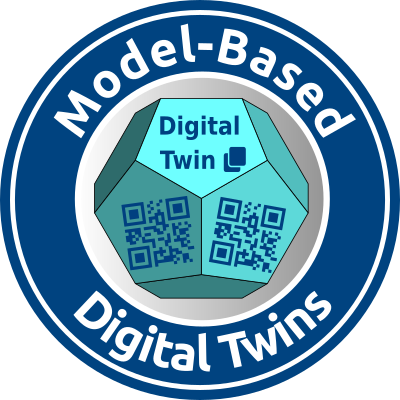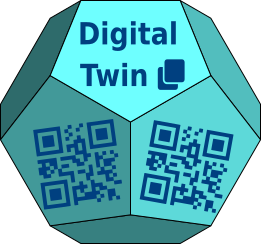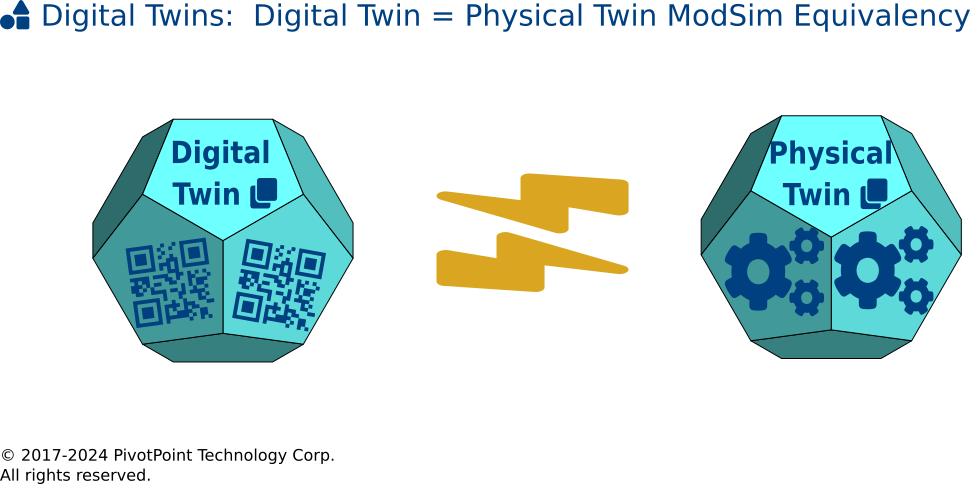DT FAQ: What is a Digital Twin? What is a Physical Twin?
What is a Digital Twin? ... Physical Twin?
FAQ Variant(s): What is a Virtual Twin?
Definition
Digital Twin: A Digital Twin is a real-time virtual replica of a real-world physical system or process (i.e., a “Physical Twin”) that serves as its indistinguishable digital counterpart for practical purposes, such as systems simulation, integration, testing, and maintenance. In order to pragmatically achieve indistinguishability between Digital Twins and their Physical Twin counterparts, massive coarse- and fine-grained Modeling & Simulation (M&S) is typically required. From a pragmatic Systems Engineering perspective, Physical Twins represent "Systems-of-Systems" and Digital Twins represent "Simulations-of-Simulations" of "Systems-of-Systems".
Digital Twins are produced by systematically applying Digital Engineering technologies, including both dynamic (behavioral) and mathematical (parametric) M&S, in a synergistic manner that blurs the usual distinctions between real physical systems and virtual logical systems. From a Systems Integration & Testing perspective, a Digital Twin should be indistinguishable from its Physical Twin counterpart. Consequently, Digital Twins can be Verified & Validated (V&V) by the following pragmatic test:
A reasonable litmus test for a "Digital Twin" is analogous to the Turing Test for AI. Suppose you have a System Tester (ST), a Physical System (PS), and a Digital Twin (DT) for PS. If the ST can run a robust system Verification & Validation (V&V) Test Suite on both PS and DT, but cannot reliably distinguish between them with a probability > 80%, ∴ DT is a bona fide Digital Twin of PS.
See also: DE FAQ: What is Digital Twin = Physical Twin M&S equivalency?
DIGITAL TWIN WORKS, DIGITAL TWIN ENTERPRISE ARCHITECTURE FRAMEWORK, DTEAF, AGILE MODEL-BASED SYSTEMS ENGINEERING, AGILE MBSE, and AGILE MBSE 6D EAF are trademarks of PivotPoint Technology Corporation. All other product and service names mentioned are the trademarks of their respective companies.



